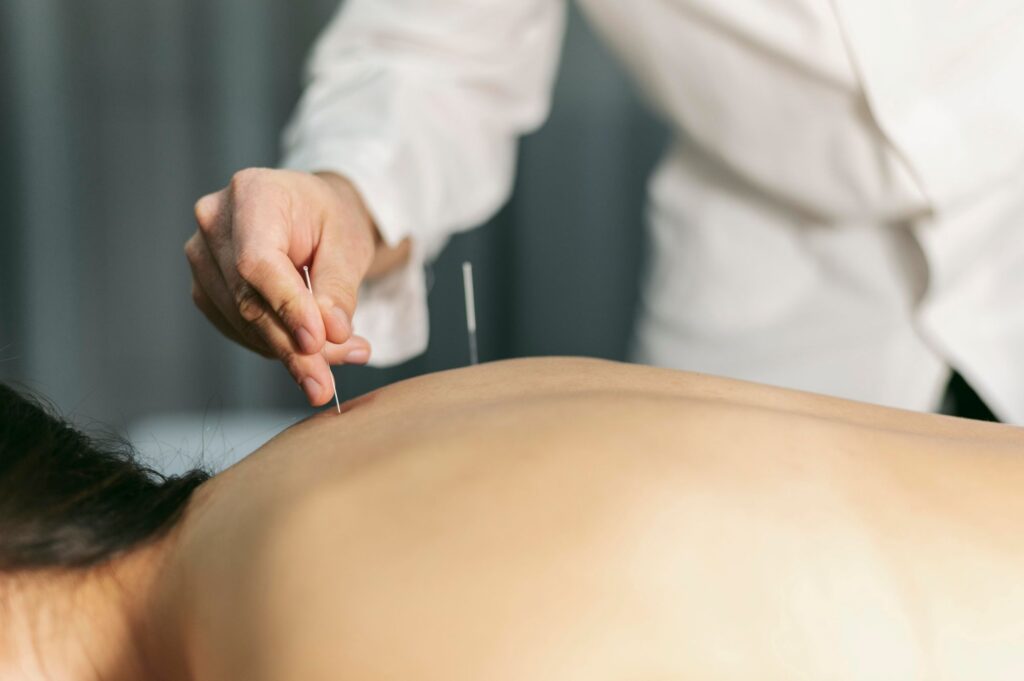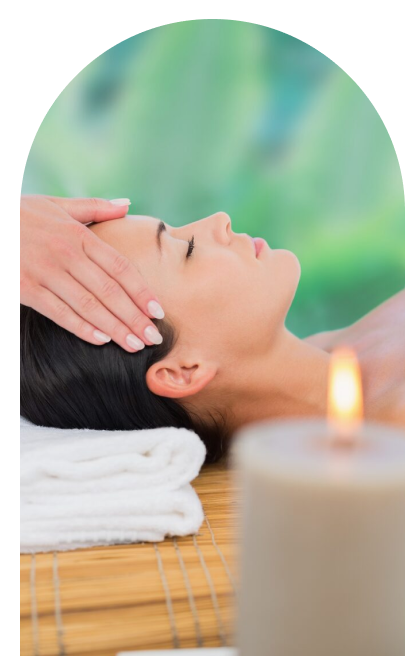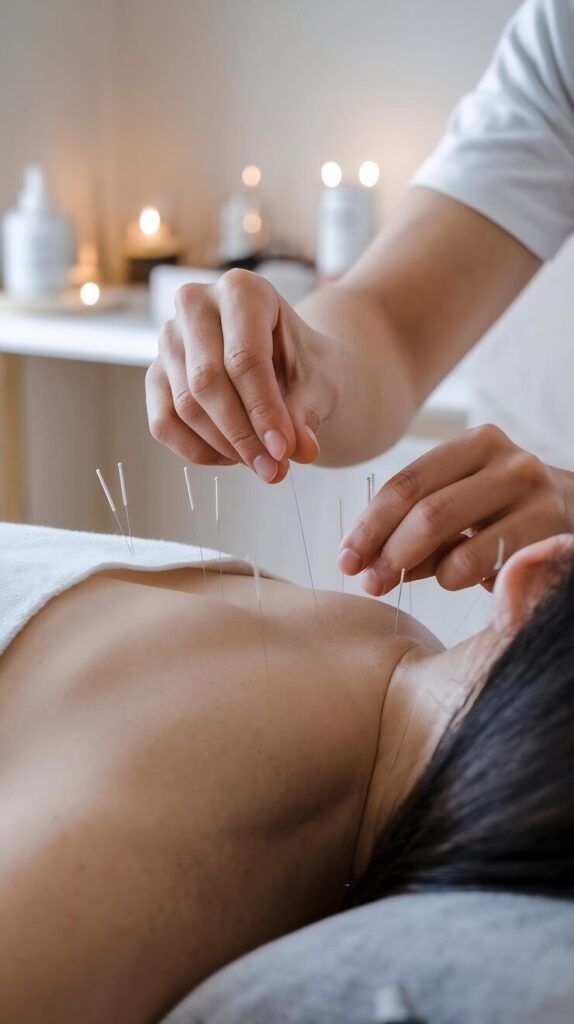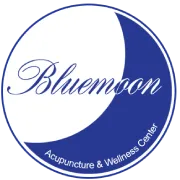Acupuncture
Acupuncture
Welcome to Acupuncture Services
Acupuncture is a 3,000-year-old healing technique of Traditional Chinese Medicine. In 1997, the National Institutes of Health (NIH) documented and publicized acupuncture’s safety and efficacy for treating a wide range of conditions. Acupuncture improves the body’s functions and promotes the natural self-healing process by stimulating specific anatomic sites–commonly referred to as acupuncture points, or acupoints. The most common method used to stimulate acupoints is the insertion of fine, sterile needles into the skin. Pressure, heat, or electrical stimulation may further enhance the effects. Other acupoint stimulation techniques include Tui Na, moxibustion or heat therapy, cupping, and the application of topical herbal medicines and liniments.

Traditional Chinese Medicine is based on an ancient philosophy that describes the universe and the body in terms of two opposing forces: yin and yang. When these forces are in balance, the body is healthy. Energy, called “qi” (pronounced “chee”), flows along specific pathways, called meridians, throughout the body. This constant flow of energy keeps the yin and yang forces balanced. However, if the flow of energy gets blocked, like water getting stuck behind a dam, the disruption can lead to pain, lack of function, or illness. Acupuncture therapy can release blocked qi in the body and stimulate function, evoking the body’s natural healing response through various physiological systems. Modern research has demonstrated acupuncture’s effects on the nervous system, endocrine and immune systems, cardiovascular system, and digestive system. By stimulating the body’s various systems, acupuncture can help to resolve pain, and improve sleep, digestive function, and sense of well-being.”What happens during an acupuncture treatment?” First, the acupuncturist will ask about your health history.
Then, he or she will examine your tongue’s shape, color, and coating, feel your pulse, and possibly perform some additional physical examinations depending on your individual health needs. Using these unique assessment tools, the acupuncturist will be able to recommend a proper treatment plan to address your particular condition. To begin the acupuncture treatment, you lie comfortably on a treatment table while precise acupoints are stimulated on various areas of your body. Most people feel no or minimal discomfort as the fine needles are gently placed. The needles are usually retained between five and 30 minutes. During and after treatments, people report that they feel very relaxed.”How many treatments will I need?” The frequency and number of treatments differ from person to person. Some people experience dramatic relief in the first treatment. For complex or long-standing chronic conditions, one to two treatments per week for several months may be recommended. For acute problems, usually fewer visits are required, usually eight to ten visits in total.
Case-controlled clinical studies have shown that acupuncture has been an effective treatment for the following diseases, symptoms or conditions:
- Depression (including depressive neurosis and depression following stroke)
- Epigastralgia, acute (in peptic ulcer, acute and chronic gastritis, and gastrospasm)
- Pain in dentistry (including dental pain and temporomandibular dysfunction)
- Facial pain (including craniomandibular disorders)
- Allergic rhinitis (including hay fever)
- Biliary colic
- Dysentery, acute bacillary
- Dysmenorrhoea, primary
- Headache
- Tennis elbow
- Hypertension, essential
- Hypotension, primary
- Knee pain
- Leukopenia
- Low back pain
- Morning sickness
- Nausea and vomiting
- Neck pain
- Periarthritis of the shoulder
- Postoperative pain
- Renal colic
- Rheumatoid arthritis
- Sciatica
- Sprain
- Stroke

The following diseases, symptoms, or conditions have limited but probable evidence to support the therapeutic use of acupuncture:
- Acne vulgaris
- Bell’s palsy
- Bronchial asthma
- Cancer pain
- Cardiac neurosis
- Cholelithiasis
- Earache
- Female infertility
- Facial spasm
- Gouty arthritis
- Hyperlipaemia
- Abdominal pain (in acute gastroenteritis or due to gastrointestinal spasm)
- Alcohol dependence and detoxification
- Cholecystitis, chronic, with acute exacerbation
- Competition stress syndrome
- Diabetes mellitus, non-insulin-dependent
- Epistaxis, simple (without generalized or local disease)
- Female urethral syndrome
- Fibromyalgia and fasciitis
- Gastrokinetic disturbance
- Herpes zoster (human (alpha) herpesvirus 3)
- Male sexual dysfunction, non-organic
FAQ’s

10 K
satisfied Customer

Acupuncture is an effective treatment for many different conditions, such as chronic pain, stress, anxiety, headaches, insomnia, digestive problems, and inflammation. It balances an energy flow throughout the body while also inducing immune response and relaxation to promote well-being.
Acupuncture is generally painless. Most people do not feel pain as the fine needles enter their skin but rather report a mild sensation of pressure, warmth, or tingling. The objective of the treatment is to induce an energy flow without inflicting pain.
The number of acupuncture sessions needed to achieve results varies from condition to condition and from individual to individual. In many cases, the patient will begin to feel improvement between 3-5 sessions. More treatments will be needed for chronic conditions.
Acupuncture is generally safe for the majority of people when performed by a well-trained practitioner. It is non-invasive and can be applied to many different conditions. Some selected individuals who require special consideration are those with bleeding disorders, pregnant women (in some cases), and those who have certain medical conditions.
During your first acupuncture session, the practitioner will conduct an intensive consultation, often using AcuGraph assessments of energy flow to find imbalances. Your health concerns and goals will be discussed. The practitioner will then insert very fine needles into specific acupuncture points. It is generally painless; the patient is likely to feel relaxed during the session.

